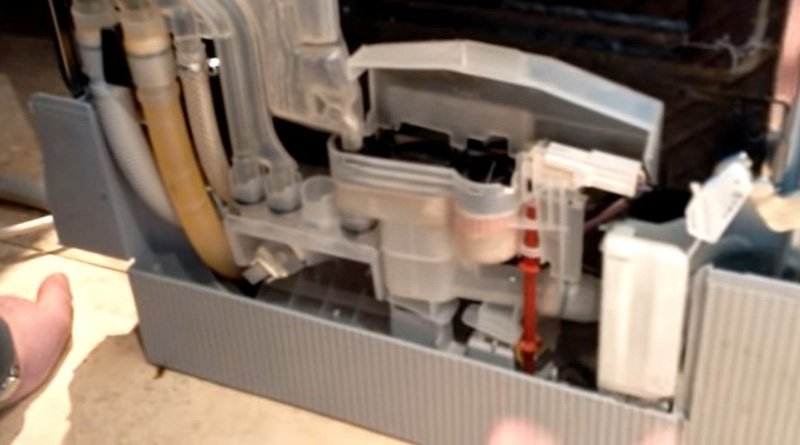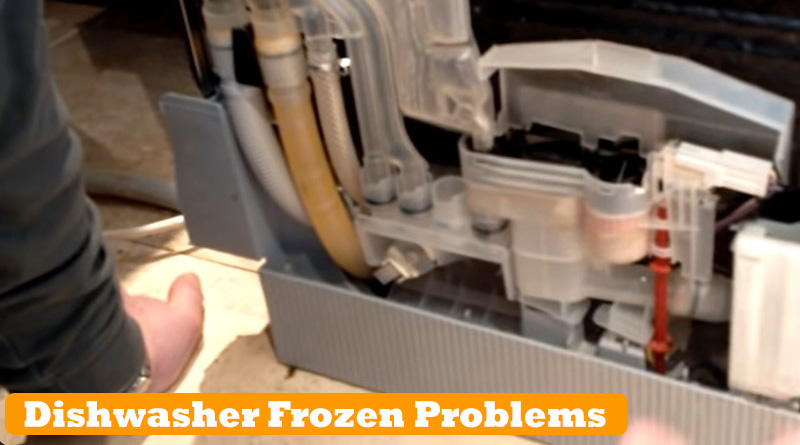Dishwasher Frozen Problems: Mastering The Frozen Challenge
Dealing with dishwasher frozen problems can be a frustrating ordeal for homeowners seeking to maintain the efficiency of their kitchen appliances. From icy spray arms to blocked water inlet valves, these issues can disrupt the seamless operation of dishwashers and lead to inconvenience in daily routines. Understanding the root causes and implementing preventive measures are essential to mitigating such challenges.
In this introductory discussion, we’ll delve into the common issues associated with dishwasher freezing, explore potential causes, and offer insights into effective troubleshooting techniques to ensure the smooth functioning of your dishwasher.
Dishwasher Frozen Problems and How to fix
Modern dishwashers are marvels of convenience, quietly doing the work of multiple dishwashing cycles with minimal energy consumption. It’s cold weather that can cause your dishwasher to encounter frosty malfunctions. Homeowners and kitchen appliance users should know the common ‘cold’ issues their dishwasher might face.
Let’s unfreeze these problems with solutions that keep your kitchen running smoothly, even in the coldest seasons.
1. Insufficient Water Supply
By its very nature, a dishwasher requires a consistent and pressurized water supply to wash and rinse your dishes effectively. A limited water supply or low water pressure can lead to freezing, as the unit may need more water to complete its cycle.
Possible Causes and Solutions
Several factors could be at play when your dishwasher is experiencing an inadequate water supply. It could be a kink in the water line, a partially closed water inlet valve, or a clogged water filter. To address this, ensure the water inlet valve under the sink is fully open. If the valve seems functional, check the water line for obstructive kinks or twists and the dishwasher’s water filter for buildup.
Importance of Proper Water Flow
Proper water flow is crucial to the operation of a dishwasher. A consistent and unimpeded supply ensures that the interior basin fills to the appropriate level for washing while maintaining pressure for spinning the water arms. Without this, the dishwasher’s cycle might freeze, leaving you with dirty dishes and a partial load.
2. Faulty or Malfunctioning Heating Element
The heating element in a dishwasher is responsible for water heating ensuring that the machine’s interior gets hot enough to dissolve the detergent and sterilize the dishes. When this component malfunctions, the dishwasher might appear stuck in one phase of the wash cycle, failing to advance.
Signs of Malfunctioning Heating Element
Common signs of this problem include the dishwasher running excessively long, but the dishes must dry thoroughly. Also, you might notice a burning smell or visible damage to the heating element, such as cracks or breaks.
Diagnosis and Replacement
To troubleshoot, you may need to access the heating element at the bottom of the dishwasher beneath the basin. Visually inspect the element and its wiring for damage. If it appears compromised, or if a test with a multimeter reveals that it’s not conducting electricity, a replacement will likely be necessary.
3. Frozen Spray Arms
The spray arms inside dishwasher are crucial for distributing the pressurized water across your dishes. If these arms are frozen, they won’t be able to spin, leading to lackluster dish cleanliness. Frozen spray arms can occur due to excess moisture inside the dishwasher or a manufacturing defect.
Causes and Solutions
Examine the holes on the spray arms for obstructions and remove any debris. Ensure the dishwasher’s interior is dry before starting a new cycle, and leave the door slightly ajar when not in use to prevent moisture buildup. If the arms are damaged or the seals are worn, they may need to be replaced.
4. Frozen Drain Hose
The drain hose carries dirty water from the dishwasher into the plumbing system. When the dishwasher is not in use, residual water in the hose can freeze, causing a blockage. Signs of a frozen drain hose include standing water at the bottom of the dishwasher or leaks.
Causes and Solutions
Thaw the hose by pouring hot water or using a hairdryer on the lowest setting. Once thawed, run the dishwasher’s rinse cycle to clear any remaining ice. To prevent future freezing, insulate the drain hose with pipe insulation or heat tape.
5. Clogged or Damaged Pump
The pump in your dishwasher is tasked with moving water throughout the unit during the wash and rinse cycles. A clog or pump malfunction can cause freezing and draining issues, leaving water standing in the bottom of your dishwasher.
Symptoms of Pump Issues
The symptoms of pump issues can range from dishes not getting cleaned properly to a complete stop in the cycle, often when the dishwasher should be draining. You might hear unusual noises, or the pump might be entirely silent in severe cases.

Cleaning or Replacement
If your dishwasher exhibits these symptoms, the pump must be inspected. This often requires removing the dishwasher from under the counter to access the pump found at the unit’s base. The impeller inside the pump can become stuck with debris, causing a clog. Cleaning it thoroughly may solve the problem, but the pump may need replacing if the impeller is damaged.
6. Control Board Issues
The control board, or main control module, directs the various operations of dishwasher. If this component is faulty, it can lead to many problems, including freezing or cycles not completing.
Indications of Malfunctioning Control Board
Several symptoms can point to a control board issue, such as the dishwasher not turning on the buttons not responding, or the unit becoming unresponsive during a cycle.
Troubleshooting and Solutions
Troubleshooting a control board typically involves systematically checking other components to rule them out as the cause. The control board should be tested to see if all other elements work. This might require expert diagnostic tools and knowledge, so consider professional help if the control board is the likely suspect.
7. Insufficient Insulation
Poor insulation within the dishwasher can render it vulnerable to temperature drops, causing components to freeze. This issue is more common in older models or dishwashers not rated for low-temperature operation.
Preventing Freezing Due to Poor Insulation
Use a dishwasher safe thermometer to ensure the space where the dishwasher is installed stays above freezing. Inspect the insulation of your appliance and verify it’s in good condition, replacing it if necessary. Consider using the dishwasher at warmer times of the day or installing a heating element beneath or near the appliance to maintain a stable temperature.
By being proactive and knowledgeable about your dishwasher’s components, you can not only fix freezing problems but also prevent them from arising in the first place. Regular maintenance and prompt attention to issues can significantly extend the lifespan of your appliance and keep your dishes sparkling clean with every cycle.
Final Verdict
Navigating through dishwasher-frozen problems can be a challenging yet manageable task. By understanding the potential issues that may arise, users can take proactive measures to prevent and address these freezing concerns. Regular maintenance, timely repairs, and staying informed about the functionin various components can go a long way in ensuring the smooth operation of your dishwasher.
A well-maintained appliance preserves its longevity and ensures that your kitchen routine remains uninterrupted, allowing you to enjoy the convenience of a reliably functioning dishwasher.
FAQs of Dishwasher Frozen Problems
Q: Why is my dishwasher not working in cold weather?
A: If your dishwasher isn’t working properly in cold weather, it may be due to the water supply line being frozen. This can prevent water from reaching the dishwasher, causing it to malfunction.
Q: How can I tell if my dishwasher’s water supply line is frozen?
A: If your dishwasher isn’t filling with water or displays an error code related to the water supply, it could indicate a frozen supply line. A noticeable drop in water pressure elsewhere in your home could also show this issue.
Q: What should I do if my dishwasher’s water supply line is frozen?
A: If you suspect the water supply line is frozen try turning off the water supply, then gently warm the pipe with a hairdryer. Be careful not to heat the pipe too rapidly, as this could cause it to burst.
Q: Can freezing temperatures damage my dishwasher?
A: Yes, freezing temperatures can potentially damage your dishwasher. If water within the dishwasher or its pipes freezes, it can expand and cause the pipes or the dishwasher to crack.
Q: How can I prevent my dishwasher from freezing in the winter?
A: Keep your home’s heating on a low setting, even when you’re not at home, to prevent pipes from freezing. Insulating your pipes can also help. Consider moving it indoors or protecting the space if your dishwasher is in a garage or another unheated area.
Q: What should I do if my dishwasher has already been damaged by freezing?
A: If your dishwasher has been damaged by freezing, it’s best to call a professional appliance repair service. They can assess the damage and determine whether the dishwasher can be repaired or needs replacing.

